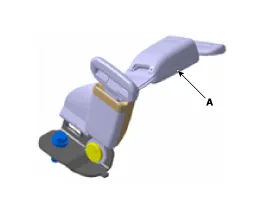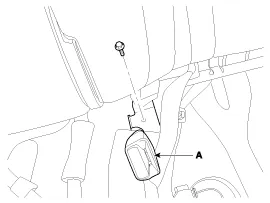Hyundai Genesis (DH): Rear Seat Belt / Rear Seat Belt Buckle Repair procedures
Hyundai Genesis (DH) 2013-2016 Service Manual / Body (Interior and Exterior) / Rear Seat Belt / Rear Seat Belt Buckle Repair procedures
| Replacement |
| 1. |
Remove the rear seat cushion assembly.
(Refer to Rear Seat - "Rear Seat Assembly") |
| 2. |
Loosen the mounting bolt, and then remove the rear seat belt buckle (A).
[LH]
[RH]
|
| 3. |
Install in the reverse order of removal.
|



